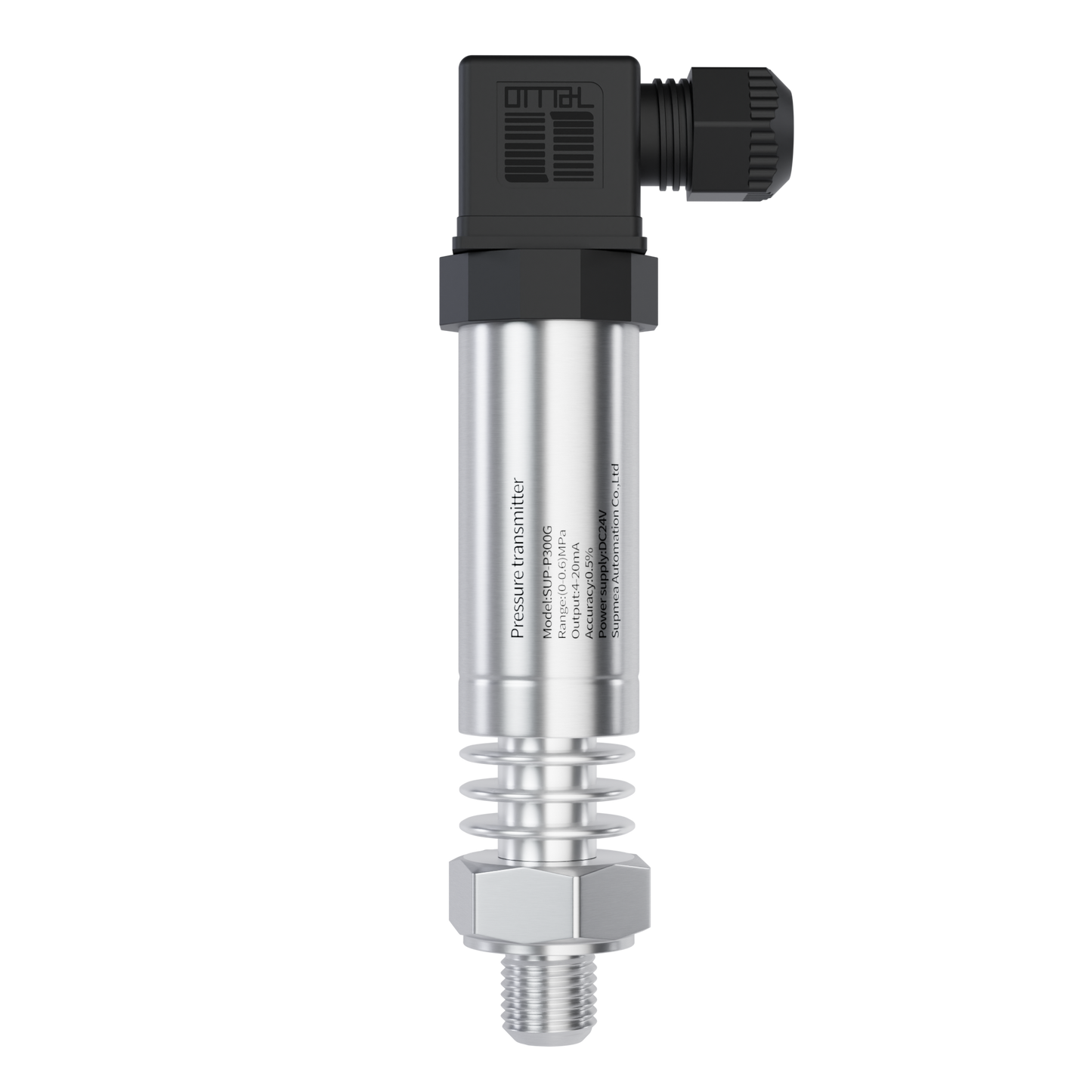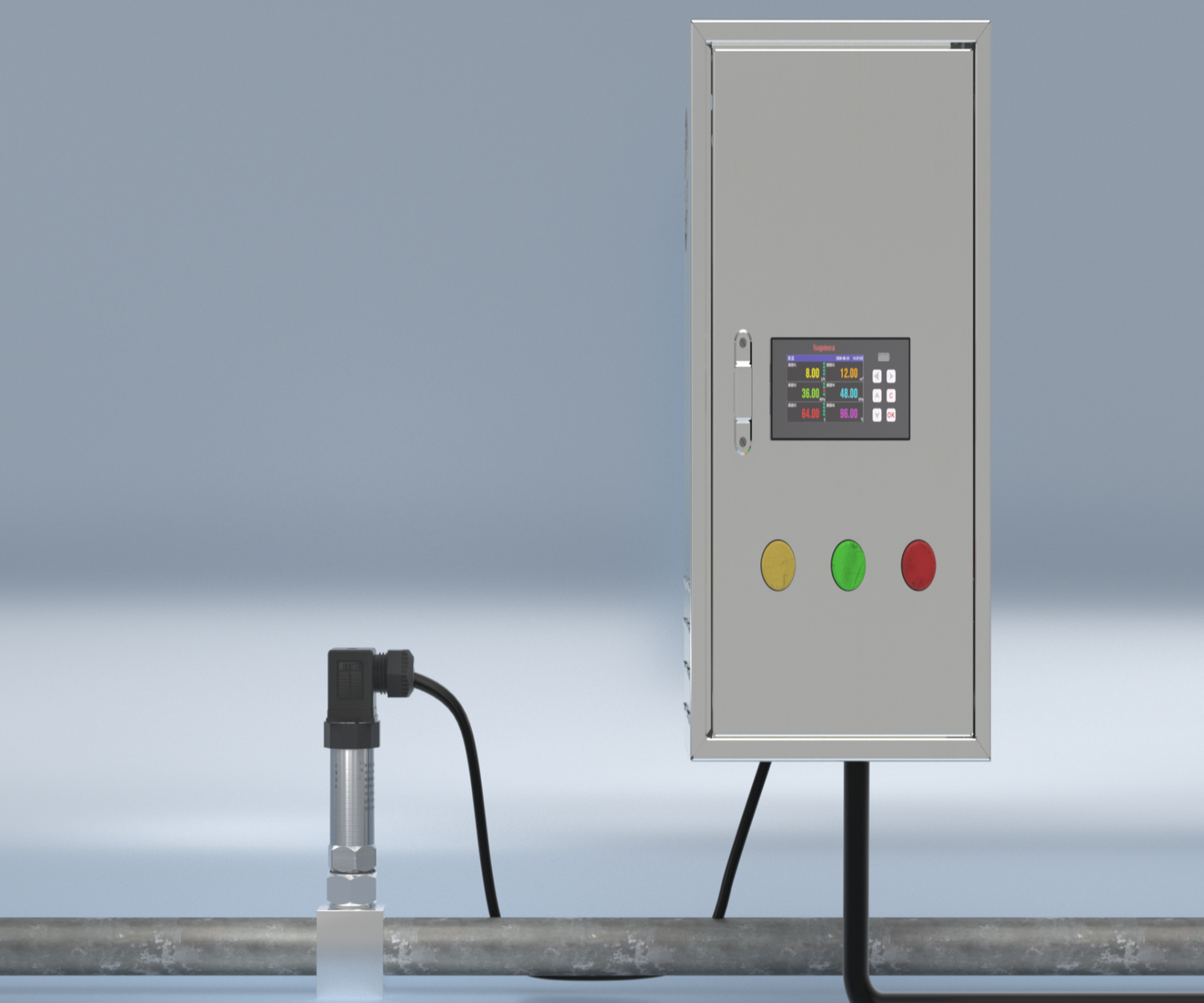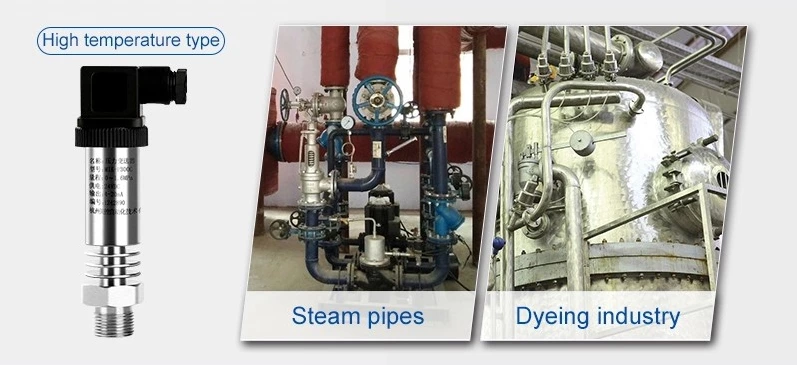BayMeters
High temperature pressure transmitter P300G
High temperature pressure transmitter P300G
Share


Introduction
A high-temperature pressure transmitter is a specialized device used to measure and transmit pressure readings in applications where the temperature is significantly elevated. These transmitters are designed to withstand and function reliably under extreme temperature conditions, ensuring accurate pressure measurements even in harsh environments.
Specification
Measuring range -0.1…0/0.01…60Mpa
Display resolution 0.5%
Medium temperature -50-250°C
Working temperature -20-85°C
Output signal 4-20mA Analog output
Pressure type Gauge pressure, adiabatic pressure and sealed pressure
Measure medium Liquid; Gas; Oil etc.
Pressure overload 0.035...10MPa (150%FS)10...60MPa (125%FS)
Resolution 0.5% F.S
Output signal 4~20mA
Installation Thread
Power supply 24VDC (9 ~ 36V)
Features
1. Temperature Resistance: These transmitters are constructed using materials that can withstand high temperatures without compromising accuracy or performance.
2. High Pressure Range: They are capable of measuring pressures across a wide range, making them suitable for various industrial processes and applications.
3. Stability and Reliability: High-temperature pressure transmitters are engineered to maintain stability and accuracy over prolonged periods of operation, even in challenging conditions.
4. Protective Enclosure: To shield sensitive internal components from extreme temperatures and potential contaminants, they often come with a robust protective enclosure.
5. Output Signals: These transmitters typically offer various output options, such as analog signals (4-20mA, 0-5V, etc.) or digital protocols (HART, Profibus, Foundation Fieldbus, etc.), allowing seamless integration with control systems.
Application
1. Petrochemicals: They are used in refining and processing plants where high-temperature and high-pressure conditions are common.
2. Power Generation: In power plants, these transmitters help monitor boiler and steam pressures at elevated temperatures.
3. Aerospace: In aircraft and spacecraft, where temperature variations can be extreme, these transmitters ensure proper pressure measurements.
4. Metallurgy: For monitoring pressure in high-temperature furnaces and metal casting processes.
5. Oil & Gas: In upstream and downstream operations where processes involve high temperatures and pressures.
6. Automotive: Some automotive testing and research applications require pressure measurements at high temperatures.


